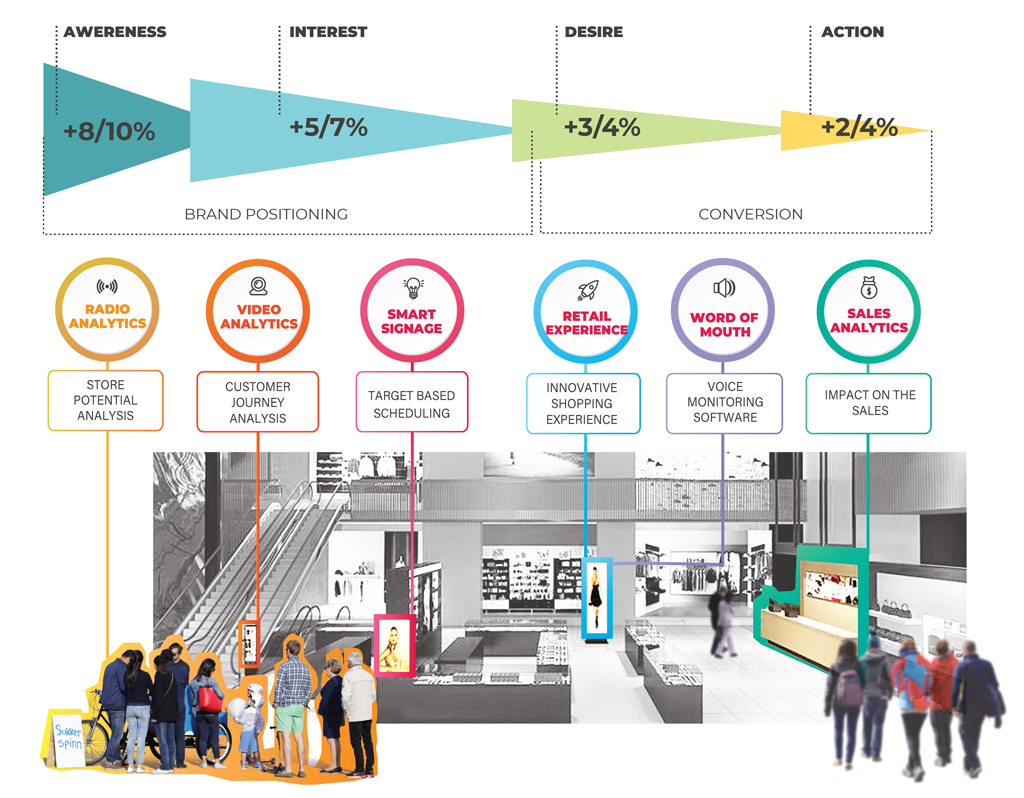
We constantly interact – with people, objects, devices, our cars and within our homes.
User interfaces that we interact with, using modalities such as touch, gestures or voice, are frequently perceived as Natural User Interfaces (NUI).
Our interactions become more meaningful if they are natural to and when provoking emotions.
Maybe the best line to describe NUI comes from Daniel Wigdor: ”Content is the interface”, which suggests to remove a layer of the interface, allowing a more direct and transparent access to the content. As the user is interacting directly with the content, it will be the same content to instruct the user about its functionalities.
We were all witnesses of the hyper-awareness of possible implications of touchable surfaces, resulting in behaviour and attitude changes that arrived with COVID-19. Most of the firms involved in touch-linked business turned to a new approach. ”Touchless” future is imminent, and the pandemic just accelerated the transition.
But how can we design contactless, self service interfaces suitable for future users and new experiences?
The answer is simple: using touchless technologies with Natural User Interface.
If we consider human interactions for a moment, (removing ourselves from the world of computers), we will quickly realize that we utilize a broad range of gestures in our daily communication.
The advantages of NUI technologies begin with the sanitary point of view and including 0 learning curve, give possibility to everybody to interact with the technology and use the services provided by it without necessity to learn any new gesture.
They are accessible to anyone. In NUI, the natural abilities of humans become inspiration and model to generate new modes of interaction.

But, how to design the right kind of interaction?
If users find interaction with an interface difficult, their mental effort or cognitive load is high.
High cognitive load means the users have to keep thinking about how to manipulate the interface instead to focus on achieving a task. Users’ cognitive load should be at minimum in order to ensure less effort in the long run and allow us to target a broader user group.
The user interaction design should start from understanding the objects in the physical world.
NUI should be designed in the way the user primarily applies basic knowledge and simple skills during the interaction. This will ensure that the interface is easy to use and learn.
Simple, frequently used tasks should have equally simple gestures to trigger them.
NUI technologies, especially touchless ones, should be accessible to a wider audience, designed to be understandable for all ages and abilities. They can open up computing to new audiences, such as the very young, the very old, or people with disabilities. Creating a successful NUI means that users will decide in a very short time on accessing and using your design.
Designing good NUI means keeping in mind the identity, needs and context of the users every step of the way.
And the most important: great NUI design is about satisfying needs, not outsmarting users.



